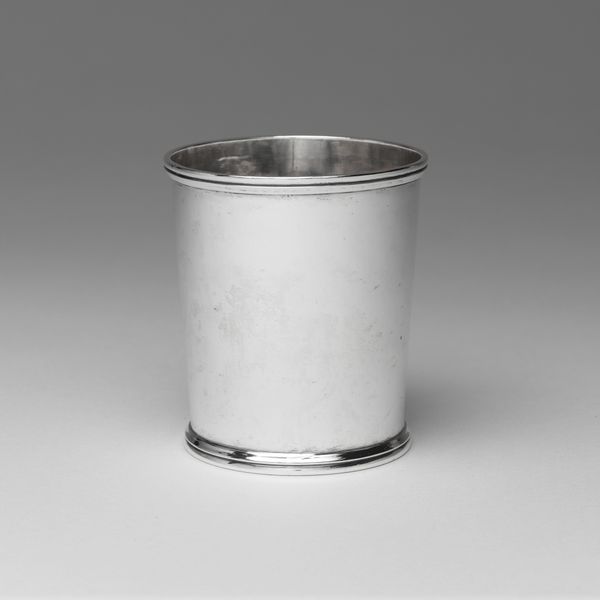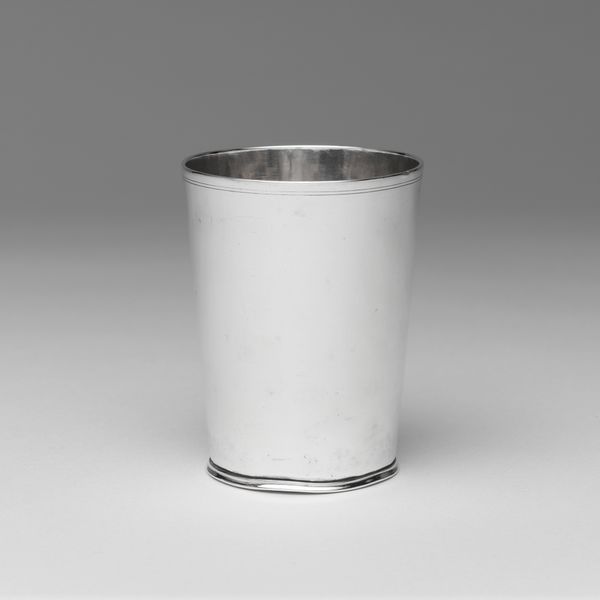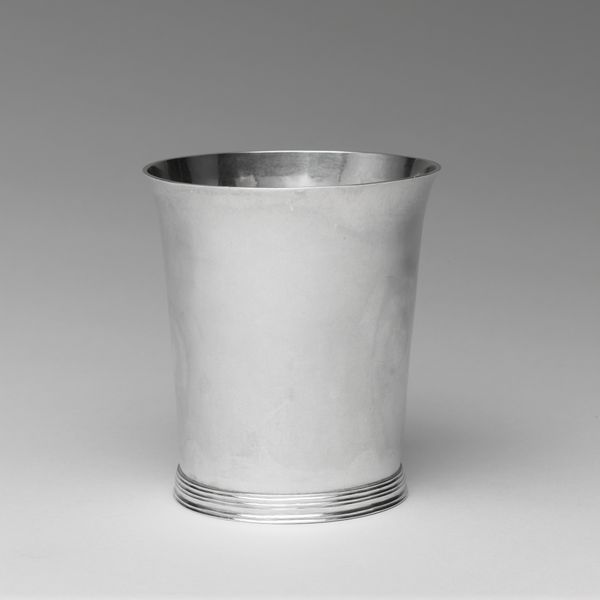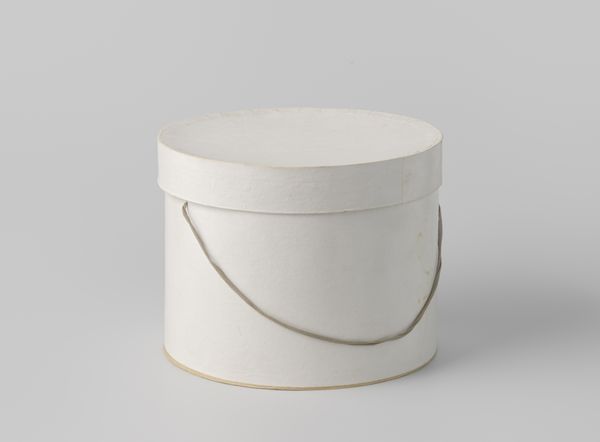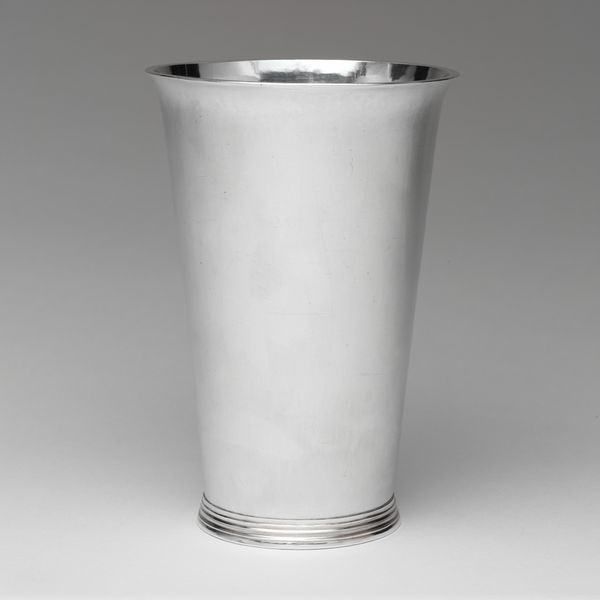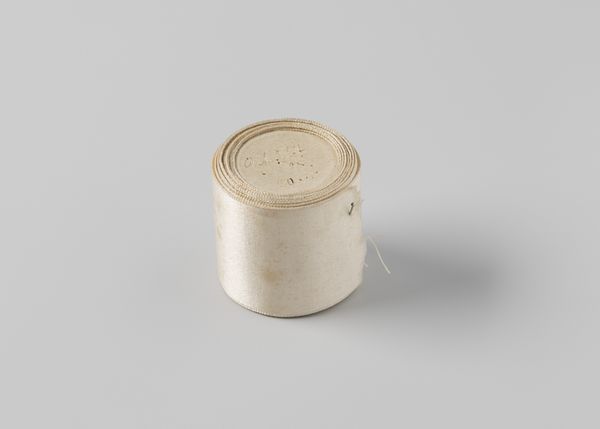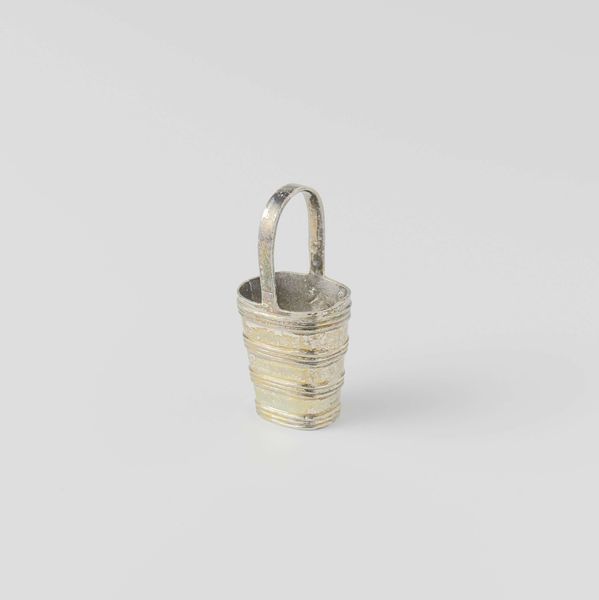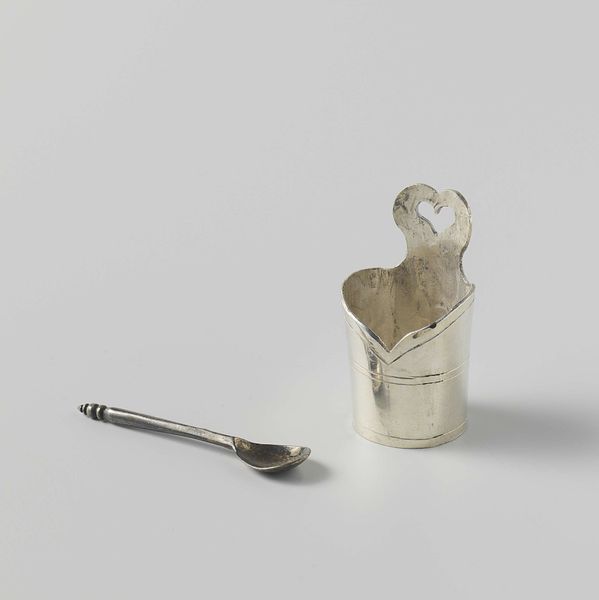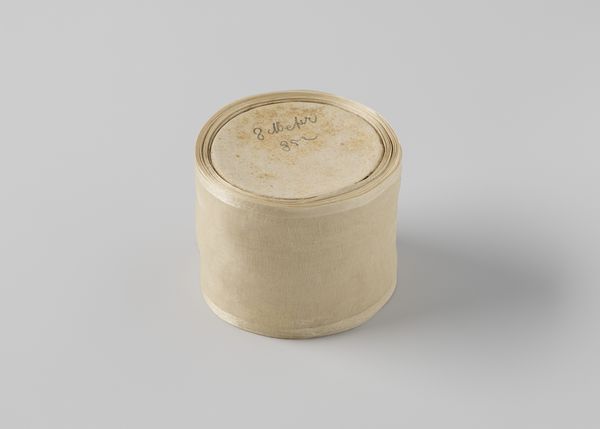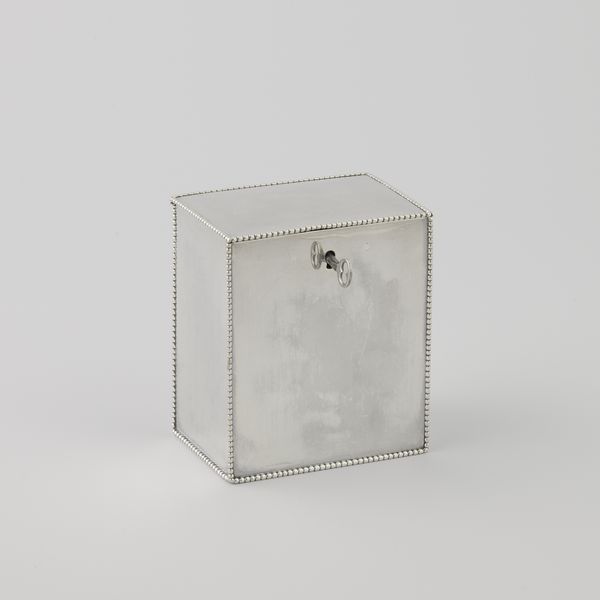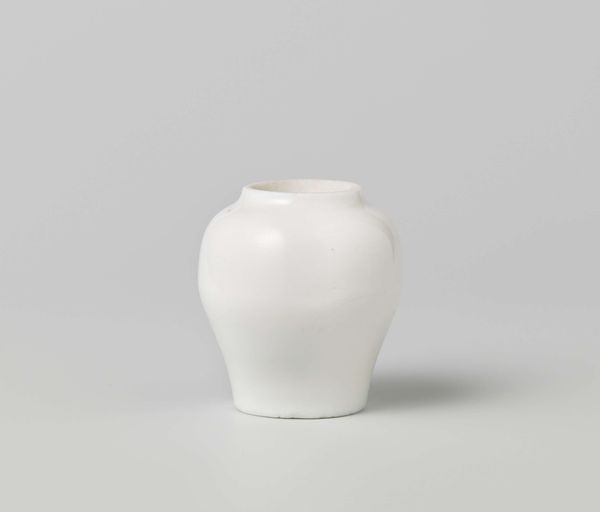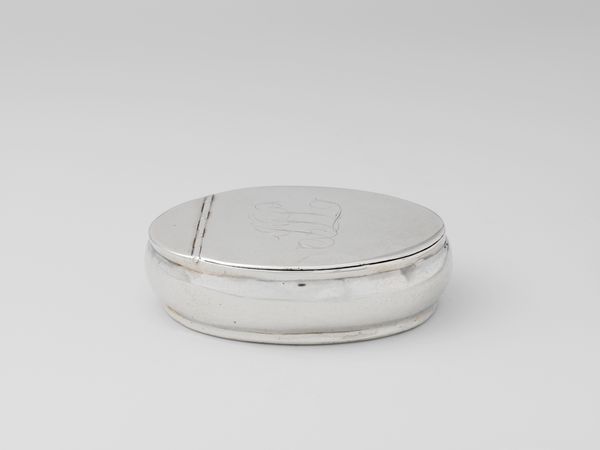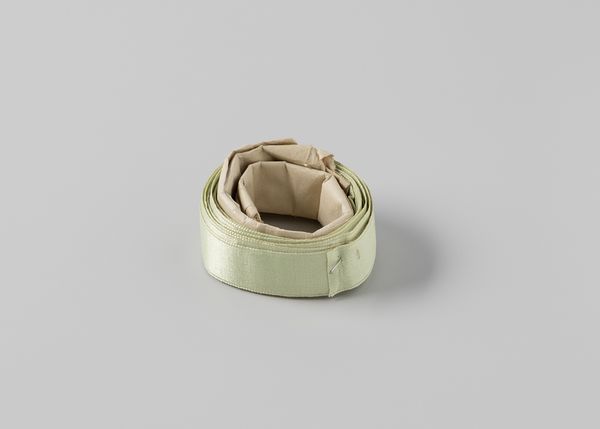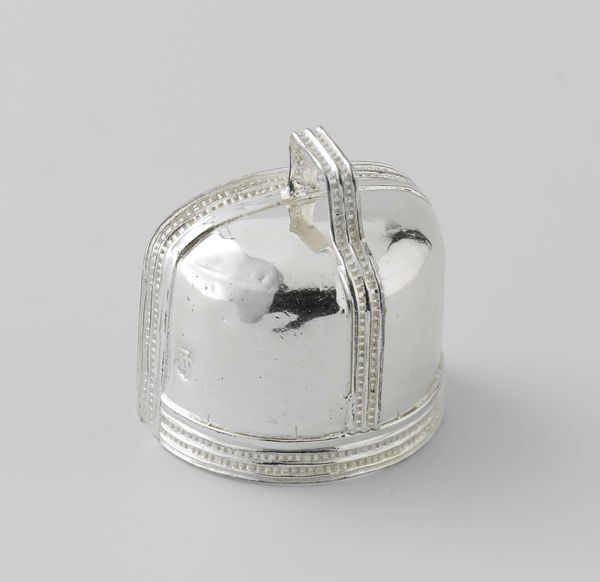
silver, metal
#
silver
#
baroque
#
metal
#
decorative-art
Dimensions: height 3.1 cm, diameter 2.3 cm
Copyright: Rijks Museum: Open Domain
This silver Zeepbak, or soap box, was made in the early 18th century by Abraham van der Hoeff. At just over 3 centimeters in height, it’s a very small object, made with a silversmithing technique called raising. The inherent qualities of silver allow it to be worked into a smooth form, here a truncated cone, ideal for holding a cake of soap. Raising involves hammering a flat disk of silver into a hollow form. The material is incrementally shaped over a series of stages through skillful hammering, annealing and finishing. The circular marks at the top hint at this laborious process. The smooth surface of the soap box also reflects light, giving it a lustrous quality that is both beautiful and practical. Silversmithing has a long history in Dutch culture, and objects like this, made of precious materials, were not just functional, but social statements. By focusing on the transformation of silver into this humble container, we can see the value added by craft and understand the social life of objects in the past.
Comments
No comments
Be the first to comment and join the conversation on the ultimate creative platform.
